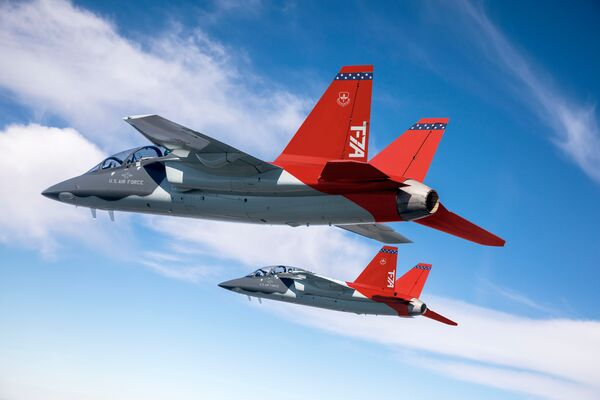
Boeing redesigned some elements of the T-7A to prevent damage because of bird strikes. (Boeing)
Boeing completed attaching the fuselages for the last engineering and manufacturing development (EMD) T-7A Red Hawk jet at its St Louis, Missouri, facility, the company announced on 16 June.
Boeing said that the aft fuselage from Sweden's Saab and the forward fuselage were joined in under 30 minutes, “a fraction of the time it takes for traditional aircraft builds”. Once the two sections are joined, the wings, fins, and tail are assembled onto the aircraft, Saab said in a 16 June release.
Saab has provided five aft fuselages for the EMD programme since its first delivery in April 2021. Future fuselages from Saab will be shipped to Boeing's new manufacturing facility in West Lafayette, Indiana.
The US Air Force (USAF) awarded Boeing a USD9.2 billion contract for 351 T-7A trainers, 46 ground-based training systems (GBTSs), and support in September 2018. The air force expects the trainer to reach initial operational capability in fiscal year (FY) 2024.
The delivery for its EMD aircraft comes as Boeing completes some redesigns related to bird strikes. A June Government Accountability Office (GAO) report found that four-pound birds can potentially damage the plane and cause injury during certain flight conditions. GAO said that “working to correct the root cause may lead to additional schedule delays”.
“We had some issues. We've redesigned the canopy arc. It's mostly aluminium but we've reset it with titanium to strengthen that,” said Steve Schmidt, Boeing's chief test pilot for the T-7A programme, on 17 June.
Boeing has also improved the windscreen to prevent bird strike damage.
Looking to read the full article?
Gain unlimited access to Janes news and more...







